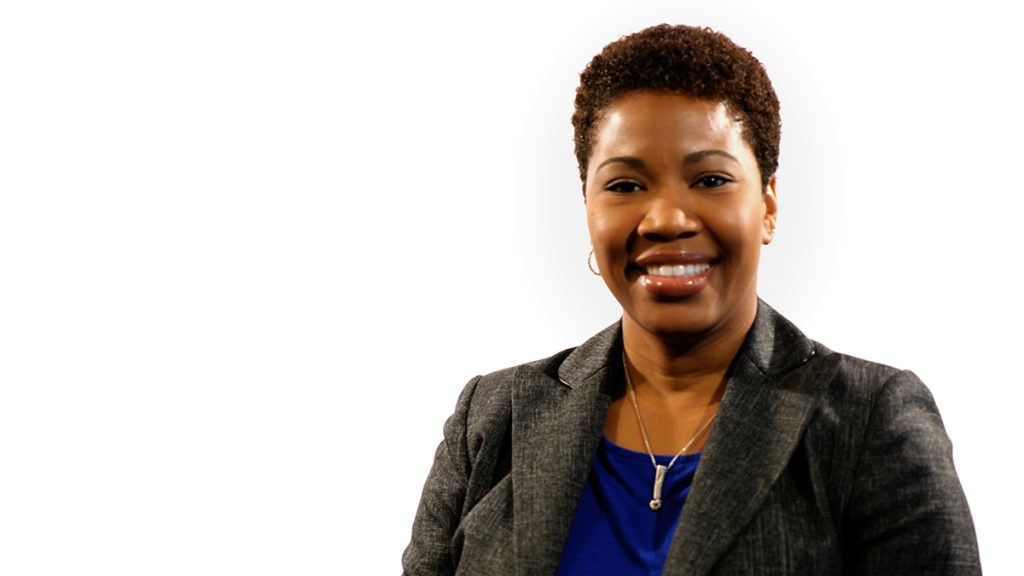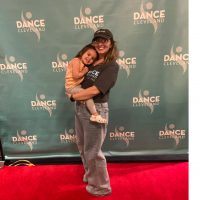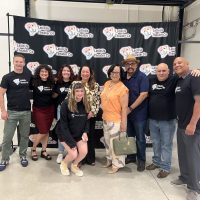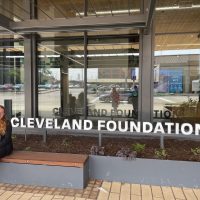Dr. Ellen Burts-Cooper, entrepreneur and philanthropist, places teamwork at the heart of both her professional and philanthropic pursuits. With the belief that we can accomplish more together than alone, Dr. Burts-Cooper follows her passion for youth mentorship by contributing to the Our Hope, Our Future Giving Circle fund and awarding scholarship funds to local students. At the 2018 African American Philanthropy Summit, Dr. Burts-Cooper was celebrated as a featured philanthropist. She shared how her upbringing and professional background helped inform her philanthropic passions in the first segment of this six-part, Black Philanthropy Month series “Celebrating the Faces of African American Philanthropy.”
Tell us about the Our Hope, Our Future Giving Circle fund.
Dr. Burts-Cooper: The Our Hope, Our Future Giving Circle was a group of people who got together with a similar vision around being able to raise funds to give back to a cause that we all resonated with; that cause was youth programming. We got together in 2012 after one of the summits. We had a lot of energy, and we said, ‘Let’s give some money and put it together. If we pool our resources, we can make a bigger impact,’ and we did that. It was a lot of work because we had to pull people together, and we had to get enough funding to actually start a fund at the Cleveland Foundation. We met our goal this year, and we are officially a fund!
When did you first become philanthropic?
Dr. Burts-Cooper: My start with philanthropy was probably in first grade. My mother made it mandatory to do community service at our home. My mom would say, ‘Give back to the world more than you take,’ and that’s always stuck with me. The first thing we ever did was the March of Dimes, and we would walk house-to-house and collect the dimes. My earliest was probably first grade, and then it continued throughout high school. I would volunteer for various events, mostly at that point it was giving my time. In college, it moved to time and some treasure, because I would give to various youth-type organizations. My focus was around younger people, high school and elementary mentoring. In college, I was mentoring high school students, and when I moved to graduate school, I mentored undergrad college students. A lot of time was also given in the way of financial funds that I had for students who were trying to go to college or enter some type of educational institution.
How did the Bagby, Palmer Memorial Scholarship begin? What is its purpose?
Dr. Burts-Cooper: The Bagby, Palmer Memorial Scholarship is a scholarship named for my mother and my husband’s mother. Both of them have passed away, but they were very big on education and scholarship. My husband and I wanted to open a fund officially for college students. We had always mentored, tutored or given away small amounts of money, and we decided we wanted to do it more formally. It goes back again from very early years. My mom would say, ‘One day, you will be very successful, and you’ll have money that you could give away, and you won’t miss it. You won’t remember what you did with it, but somebody else won’t forget it.’
An emphasis on teamwork and communication is a major part of your business and professional practice. Do you believe that also applies to philanthropy?
Dr. Burts-Cooper: At Improve Consulting, one of our big focuses is working with teams, corporate teams, nonprofit teams, small business…and the same concept lies in philanthropy. For example, Our Hope, Our Future Giving Circle was a team effort. A number of people got together to pool the resources because we realize individually we couldn’t do as much as we could collectively.
What would you say to individuals who want to be philanthropic but feel that they must be wealthy to give?
Dr. Burts-Cooper: You don’t have to be wealthy to be a philanthropist. It really means giving to others and making yourself available to make an impact in the communities that you serve and the areas that are really critical for you. It’s great when you have a lot of dollars, but you may also have your time, you may also share talents. You don’t have to have a lot of money to do it, but you do have to have a lot of passion.
You are the current co-chair of the African American Philanthropy Committee. What attracted you to this role?
Dr. Burts-Cooper: I was attracted to serve on the African American Philanthropy Committee at the Cleveland Foundation because I really wanted to, in addition to philanthropy, to think about it from my own community and what that meant. There were also a number of people in the African American community who gave their time and talent endlessly, and I wanted to be a part of something that showcased what was happening in our community. Oftentimes, you don’t see it, and I want people to be aware that giving happens at every level, and it happens among every community. I want to highlight those individuals who have spent their lives giving back to others.
Why did you choose the Cleveland Foundation as a partner?
Dr. Burts-Cooper: They are a wonderful fiscal agent for managing funds. I couldn’t imagine going anywhere else. I know there are a lot of other organizations across the country but, here in Cleveland, and even nationally, they’re recognized as an organization that really knows about giving. They’re the experts in it. They’ve done a wonderful job of taking care of us, explaining the process and the pieces that we didn’t understand.
The African American Philanthropy Committee was created in 1993 to promote awareness and education about the benefits of wealth and community preservation through philanthropy. The committee convenes a Philanthropy Summit once every two years to raise the visibility of African American philanthropy in the region and to honor local African American philanthropists. Save the date for the next Cleveland Foundation African American Philanthropy Summit, “2020 Vision: Disrupting the Cultural Landscape through Philanthropy,” in April 2020, and give online to the African American Philanthropy Committee Legacy Fund.
To learn more about becoming a donor and making your greatest charitable impact, visit www.ClevelandFoundation.org/Give.
The Cleveland Foundation is proud to have provided early funding that made it possible for two upcoming exhibits to travel to Cleveland. Check out:
- The Soul of Philanthropy: Reframed and Exhibited, a multimedia re-imagining of the book Giving Back by author Valaida Fullwood and photographer Charles W. Thomas. The exhibit, which conveys and celebrates traditions of giving time, talent and treasure in the African American community, will be on display from Sept. 6 – Dec. 6, 2019, at the Western Reserve Historical Society.
- seenUNseen, a collection of the works of some of the top African American artists dating back more than a century. On loan from the collection of longtime postal worker Kerry Davis, these objects are on public display for the first time outside of Atlanta. The show, which also includes more than 60 works from local and regional artists, will run from Sept. 20 – Nov. 16, 2019, at the Artists Archives of the Western Reserve and The Sculpture Center.



